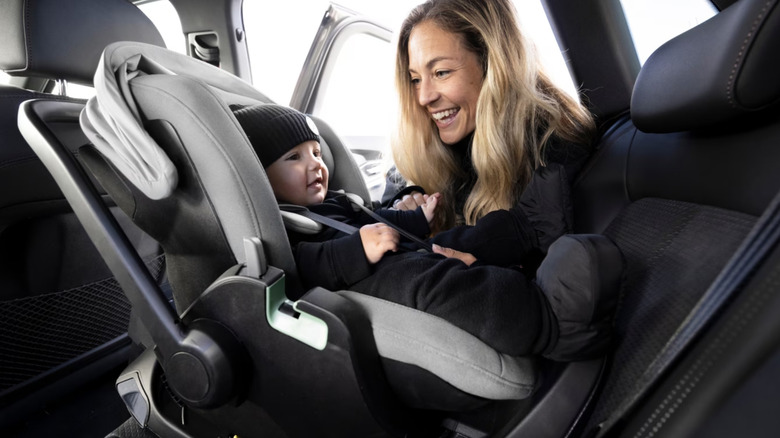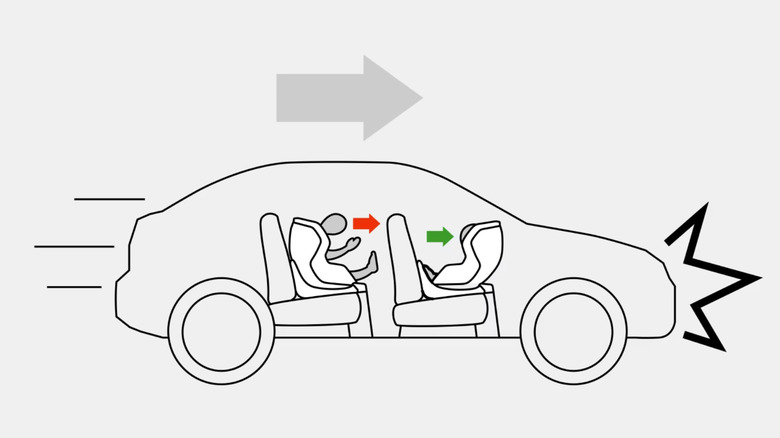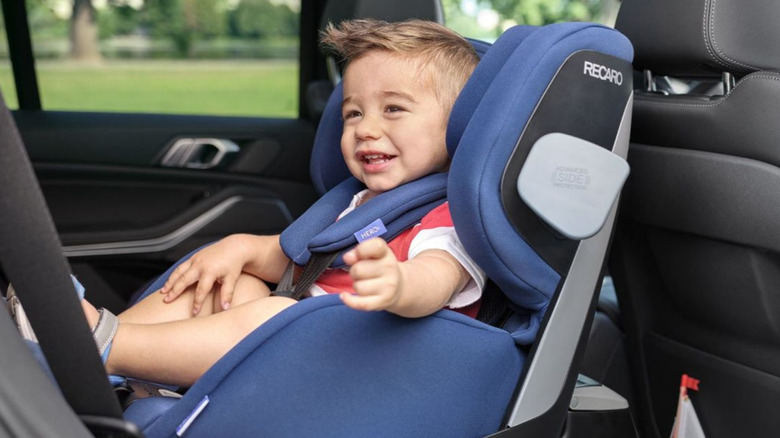Why Rear-Facing Car Seats Are Safer For Children, Explained
Keeping children safe in a motor vehicle is probably one of the most important things while driving. Shopping for a car seat is quite a task since there are so many options in the market and so many types of car seats. Not only is it important to install a baby seat properly, but it is as important to select the right seat for the intended purpose, since it concerns your child's safety. Safety ratings are one of the biggest factors to consider when people are buying a car, especially when they are considering the safety of their children.
There is real science behind it which has been derived from the coolest subject on earth, Space. In NASA's Gemini space mission, the astronauts were seated facing backward or the opposite direction of travel since they were being launched in space. This was to distribute all the forces of the launch across the astronaut's back.
A similar principle was used when creating the first rearward facing car seat. A Swedish professor, Bertil Aldman was inspired by the astronauts traveling in space, and he developed the first rear-facing car seat for toddlers. Now, using the type of baby seat also varies with how old the baby is. As the babies grow older, they can be shifted to a forward facing car seat, then to a booster seat, and eventually they grow enough to be able to do without any extra seats in the car. But for very newborns and very small children, the rear-facing seats are the way to go.
Why are rear-facing seats safer for children?
In the case of babies, especially newborn babies, their head is proportionately larger and quite a bit heavier than their bodies. This head and neck ratio means that there will be quite a bit of strain on the neck, which their bodies are not yet developed enough for.
In a forward facing collision, the baby's head will be thrown forward with quite a bit of force. This could lead to serious injuries to their neck or spine. With a rear-facing seat however, the head, neck and spine are supported and in the event of a crash, the forces are distributed equally across their backs. This is much safer for the child and their bodies are subjected to significantly less force in the event of a crash.
Even during rear-end collisions, the rear-facing seats are safer since the forces are again distributed and the baby moves with the seat, allowing the body of the child to sink into the seat instead of getting thrown forward.
How to choose the right baby seat?
Choosing the right seat is also a task. In the USA, NHTSA (National Highway Traffic Safety Administration) recommends that you use a rear-facing seat for an infant till they are 12 months old, but in some European countries, it is legally required by law to use them until they are 15 months old. But it is recommended to use a rear-facing seat for as long as you can. One can use them till their child is up to four years of age.
Other things to consider while choosing the right seat is to read the weight and height limits that a particular seat can handle, and it should match your needs. Nice to have features include a 5-point safety harness, energy absorbing foam, and side-impact protection as well.
Your seat should also comply with all the safety requirements by trusted institutions. There is the R129 EU norm which also tests for side-impact protection and ISOFIX installation, there is ADAS/Stiftung Warentest test and there is also the Swedish PLUS test certification which is even more extensive and one of the toughest crash tests worldwide for car seats. All the seats sold in the U.S. should also comply with Federal Motor Vehicle Safety Standard (FMVSS) No. 213 which also tests the seats for frontal and side impacts. Make sure the seat you are getting meets these standards.


